Rebalance Brokers
Rebalance operation is used to recompute assignment of brokers or servers in the cluster. This is not a single command, but more of a series of steps that need to be taken.
In case of brokers, rebalance operation is used to recalculate the broker assignment to the tables. This is typically done after capacity changes.
Capacity changes
These are typically done when downsizing/uplifting a cluster, or replacing nodes of a cluster.
Tenants and tags
Every broker added to the Pinot cluster, has tags associated with it. A group of brokers with the same tag forms a Broker Tenant. By default, a broker in the cluster gets added to the DefaultTenant i.e. gets tagged as DefaultTenant_BROKER. Below is an example of how this tag looks in the znode, as seen in ZooInspector.
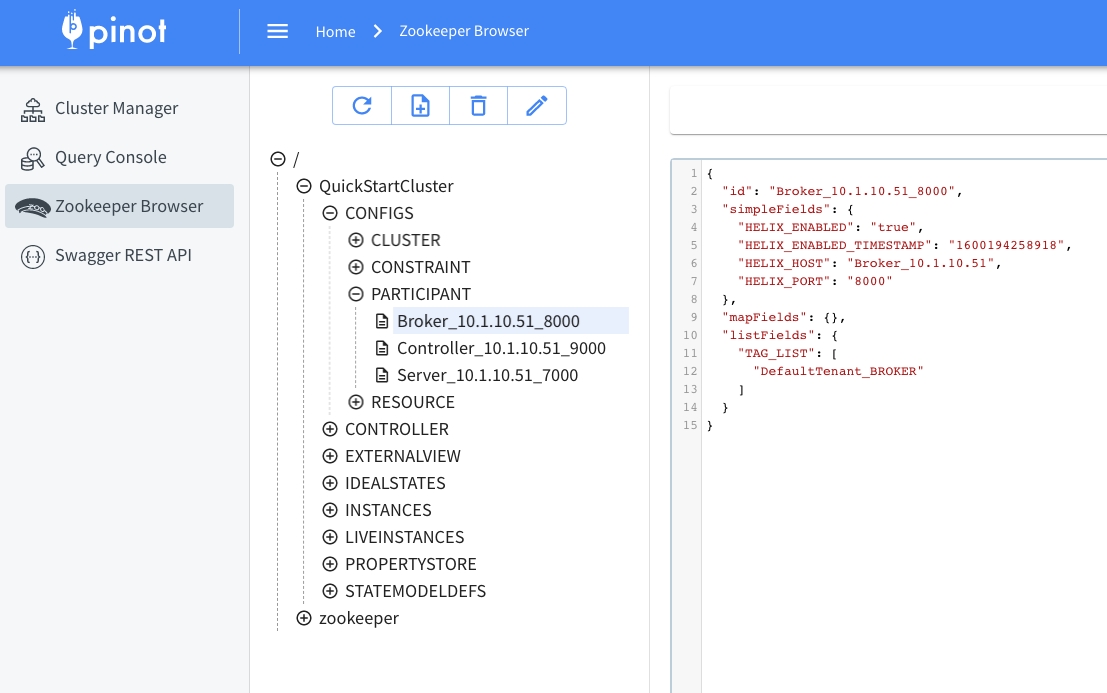
A Pinot table config has a tenants section, to define the tenant to be used by the table. More details about this in the Tenants section.
Using the tenant defined above, a mapping is created, from table name to brokers and stored in the IDEALSTATES/brokerResource. This mapping can be used by external services that need to pick a broker for querying.
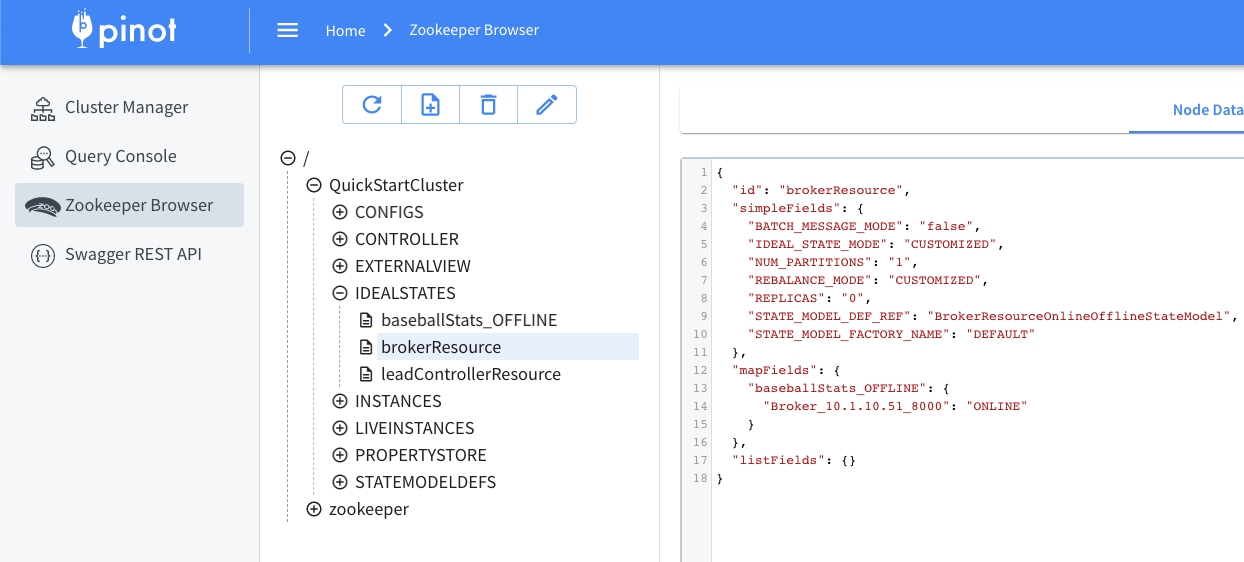
Updating tags
If you want to scale up brokers, add new brokers to the cluster, and then tag them based on the tenant used by the table. If you're using DefaultTenant, no tagging needs to be done, as every broker node by default joins with tag DefaultTenant_BROKER.
If you want to scale down brokers, untag the brokers you wish to remove.
To update the tags on the broker, use the following API:
PUT /instances/{instanceName}/updateTags?tags=<comma separated tags>
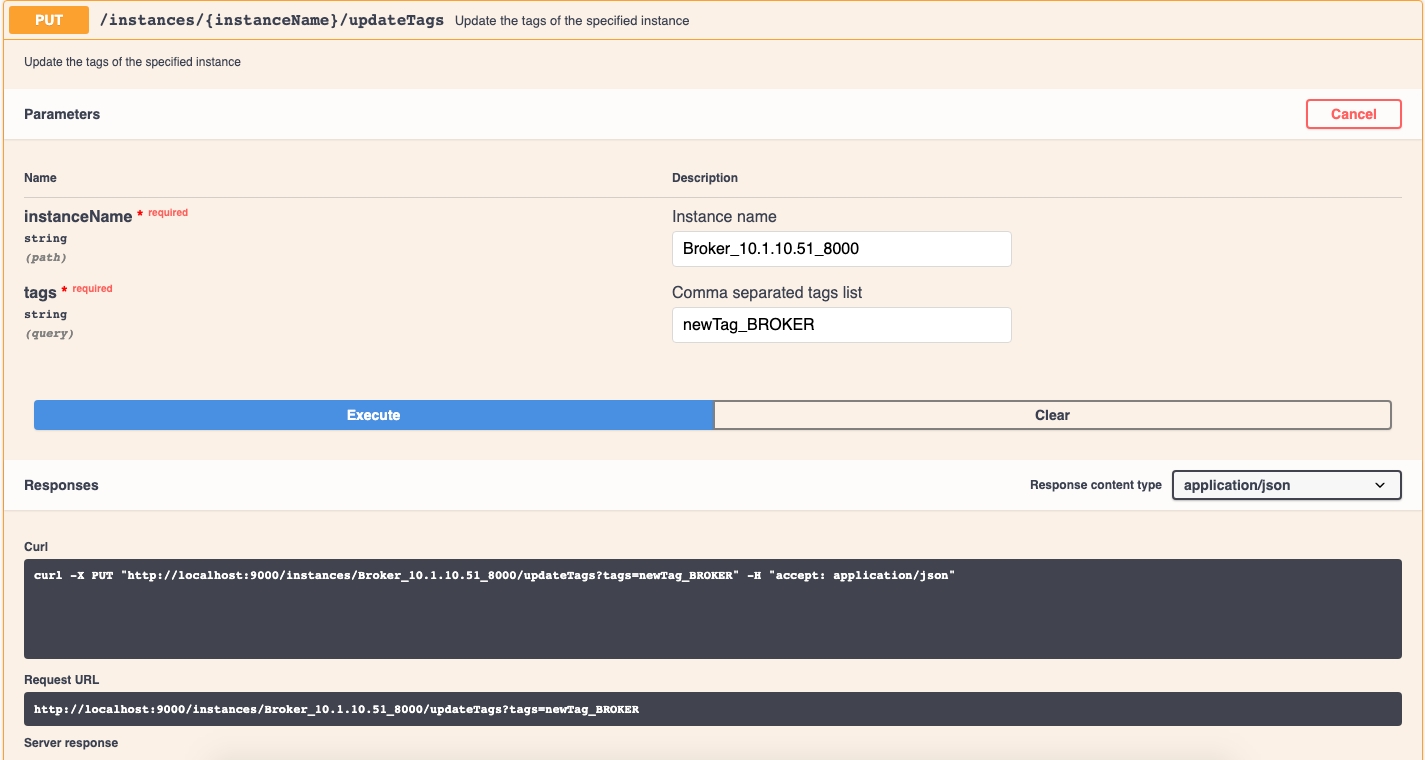
Example for tagging the broker as per your custom tenant:
PUT /instances/Broker_10.20.151.8_8000/updateTags?tags=customTenant_BROKER
Example for untagging a broker:
PUT /instances/Broker_10.20.151.8_8000/updateTags?tags=untagged_BROKER
Rebuild broker resource
After making any capacity changes to the broker, the brokerResource needs to be rebuilt. This can be done with the below API:
POST /tables/{tableNameWithType}/rebuildBrokerResourceFromHelixTags
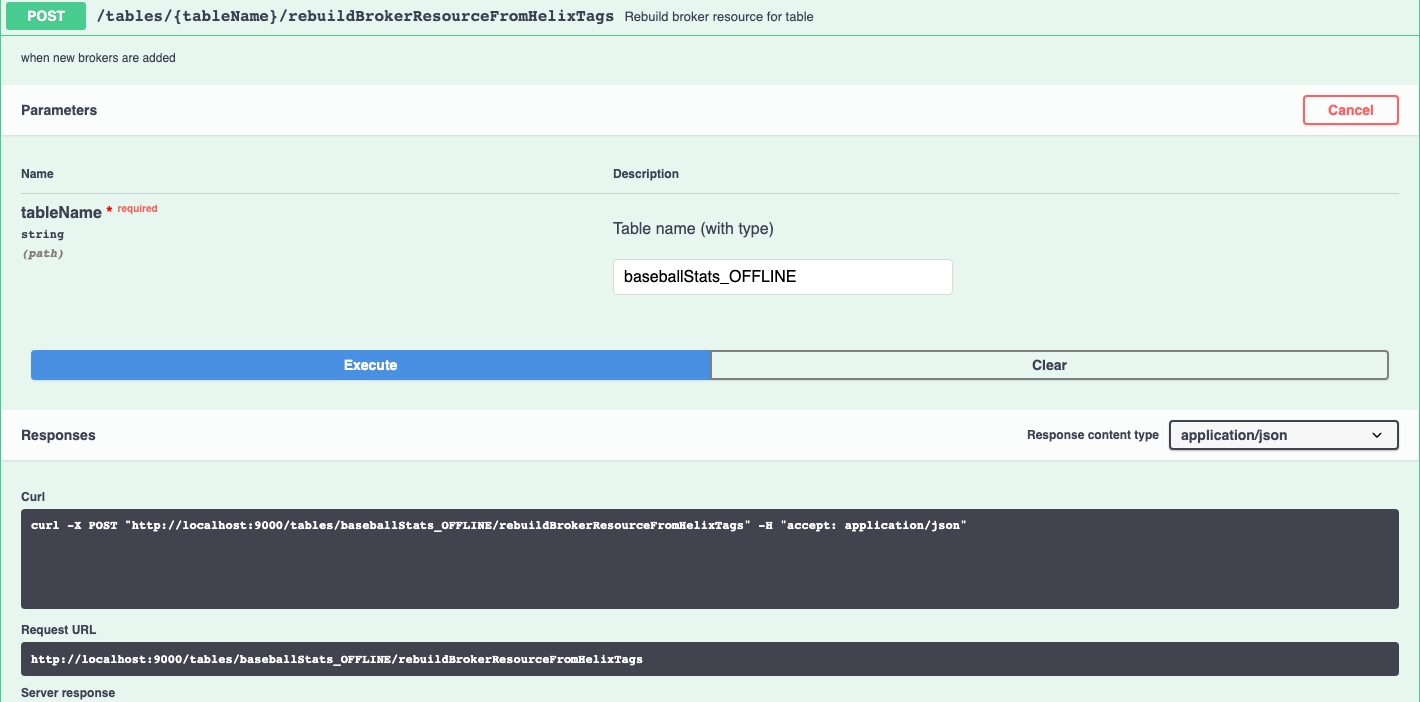
Drop nodes
This is when you untagged and now want to remove the node from the cluster.
First, shutdown the broker. Then, use API below to remove the node from the cluster.
DELETE /instances/{instanceName}
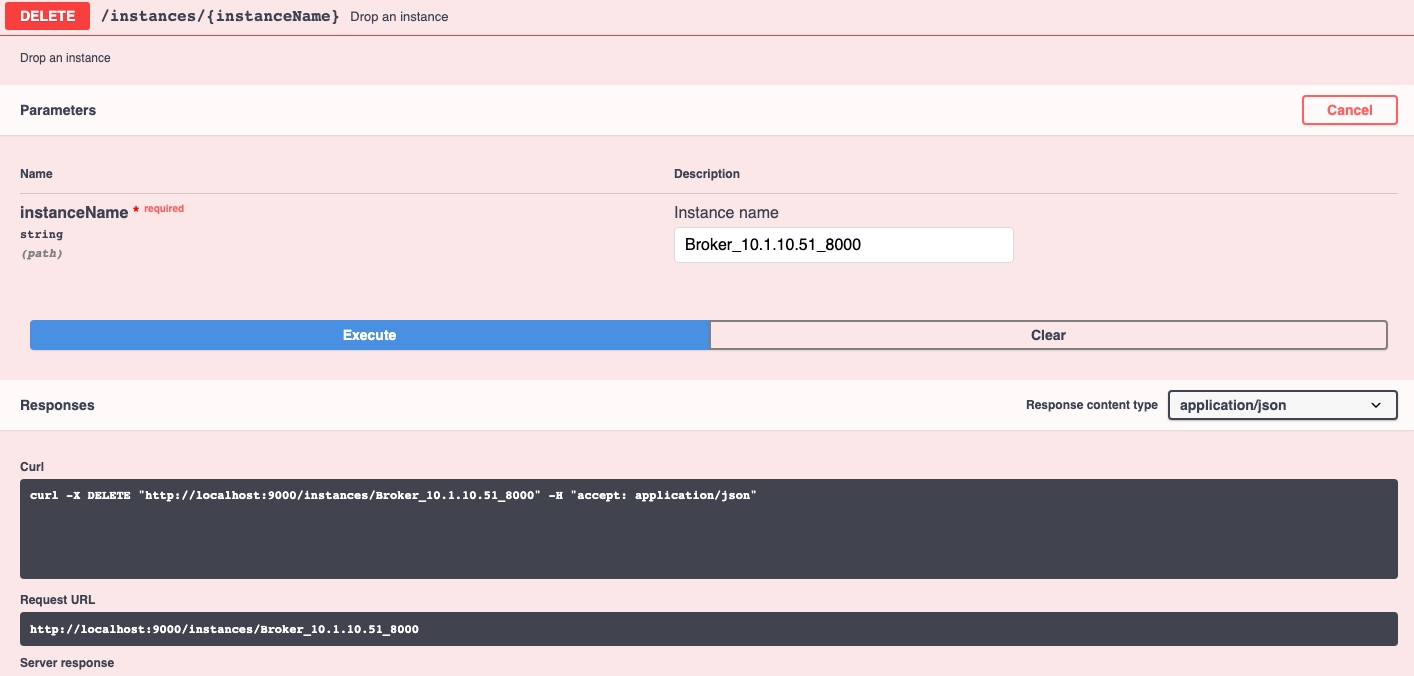
Troubleshooting
If you encounter the below message when dropping, it means the broker process hasn't been shut down.
If you encounter below message, it means the broker has not been removed from the ideal state. Check the untagging and rebuild steps went through successfully.
Was this helpful?

